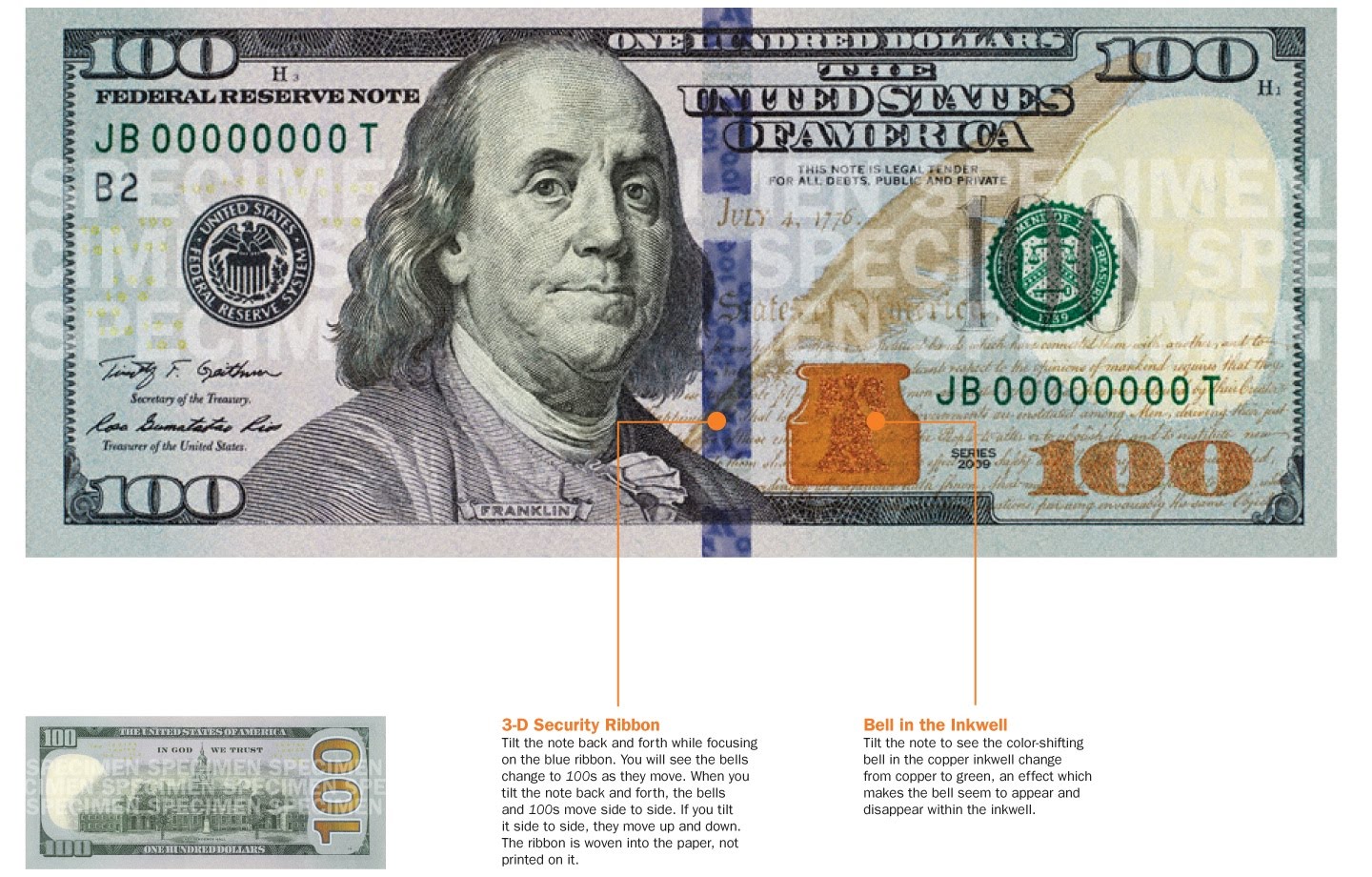In today's world, counterfeit money is a significant concern, especially when it comes to high denominations like the 100 dollar bill. Understanding how to identify counterfeit 100 dollar bills is crucial for anyone handling cash, whether you are a business owner, employee, or simply a consumer. This guide aims to provide you with thorough knowledge about the features of genuine 100 dollar bills and practical tips to spot counterfeit ones effectively.
Counterfeit currency can have severe implications on the economy and personal finances. With the rise of sophisticated printing technology, counterfeiters have become more adept at creating fake bills that can easily deceive unsuspecting individuals. By familiarizing yourself with the security features of genuine 100 dollar bills, you can protect yourself and your finances.
This article will cover essential aspects of identifying counterfeit 100 dollar bills, including the security features to look for, common signs of fake bills, and steps to take if you suspect a bill is counterfeit. Let’s dive into this critical topic to equip you with the knowledge you need!
Table of Contents
- Biographical Information
- Security Features of the 100 Dollar Bill
- Common Signs of Counterfeit 100 Dollar Bills
- How to Test for Counterfeit Bills
- What to Do If You Encounter a Counterfeit Bill
- Legal Implications of Using Counterfeit Money
- Preventive Measures Against Counterfeiting
- Conclusion
Biographical Information
The 100 dollar bill, often referred to as a "C-note," is one of the most circulated and recognized currencies in the world. It features notable historical figures and significant symbols representing American culture and values.
| Feature | Details |
|---|---|
| Denomination | 100 Dollar Bill |
| First Issued | 1861 |
| Current Design | Series 2013 |
| Portrait | Benjamin Franklin |
| Color | Green and Blue |
Security Features of the 100 Dollar Bill
To effectively identify counterfeit 100 dollar bills, it is essential to understand the security features incorporated into genuine bills. Here are the key features you should look for:
- Watermark: A faint image of Benjamin Franklin is visible when held up to the light.
- Security Thread: A vertical strip embedded in the bill that is visible when held to the light. It reads "USA 100."
- Color-Shifting Ink: The numeral "100" in the bottom right corner changes color from copper to green when tilted.
- Microprinting: Tiny text that reads "THE UNITED STATES OF AMERICA" can be found around the portrait.
- 3D Security Ribbon: A blue ribbon woven into the bill that features images of bells and 100s that move when the bill is tilted.
Common Signs of Counterfeit 100 Dollar Bills
Identifying counterfeit bills can sometimes be straightforward if you know what to look for. Here are some common signs that a 100 dollar bill may be counterfeit:
- Inconsistent Texture: Genuine bills have a unique texture that counterfeit bills often lack. Feel the bill to check for this.
- Color Issues: If the colors appear faded or inconsistent, the bill is likely counterfeit.
- Blurry Printing: Genuine bills have crisp, clear printing. If the text or images appear blurry, it may be a fake.
- Missing Security Features: If the security thread or watermark is absent, it’s not a genuine bill.
How to Test for Counterfeit Bills
Here are some effective methods for testing 100 dollar bills to determine their authenticity:
- The Light Test: Hold the bill up to the light to check for the watermark and security thread.
- The Feel Test: Run your fingers over the bill to check for the distinct texture and raised printing.
- The Tilt Test: Tilt the bill to see if the color-shifting ink changes from copper to green.
- Use a Counterfeit Detection Pen: These pens can help identify counterfeit bills by reacting to the paper used.
What to Do If You Encounter a Counterfeit Bill
If you suspect that you have received a counterfeit 100 dollar bill, take the following steps:
- Do Not Return the Bill: Keep the bill and do not attempt to pass it on.
- Notify Authorities: Contact your local law enforcement agency or the U.S. Secret Service.
- Document the Transaction: Write down details of the transaction and any information about the person who passed the bill.
- Secure the Bill: Store the bill in a safe place until authorities can inspect it.
Legal Implications of Using Counterfeit Money
Using counterfeit money is a serious offense and can lead to severe legal consequences, including:
- Fines: Individuals caught using counterfeit currency can face hefty fines.
- Imprisonment: In some cases, individuals may serve time in prison for engaging in counterfeiting activities.
- Criminal Record: A conviction for counterfeiting can lead to a permanent criminal record.
Preventive Measures Against Counterfeiting
To protect yourself and your business from counterfeit bills, consider implementing the following preventive measures:
- Training Employees: Educate your staff on how to recognize genuine currency.
- Invest in Detection Tools: Use counterfeit detection pens and UV light scanners to assist in identifying fake bills.
- Stay Informed: Keep up with the latest information from the U.S. Treasury regarding currency changes and updates.
Conclusion
Identifying counterfeit 100 dollar bills is essential for anyone who handles cash. By understanding the security features of genuine bills and knowing the common signs of counterfeit currency, you can protect yourself from potential financial losses. Remember to always stay vigilant and report any suspicious bills to the authorities. If you found this article helpful, please leave a comment, share it with others, or check out our other informative articles!
Thank you for reading, and we hope to see you back on our site soon!




